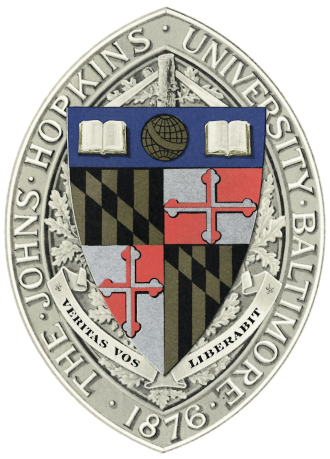



|

|

|
| Publications | Data products | Figures |
By providing homogeneous photometric and spectroscopic data of high quality for very large and objectively selected samples of galaxies, the Sloan Digital Sky Survey allows statistical studies of the physical properties of galaxies and AGN to be carried out at an entirely unprecedented level of precision and detail.
Here we publicly release catalogues of derived physical properties for 211894 galaxies, including 33589 narrow-line AGN. These are complete samples with well understood selection criteria drawn from the normal galaxy spectroscopic sample in the second SDSS public data release (DR2). We list properties obtained from the SDSS spectroscopy and photometry using modelling techniques presented in papers already published by our group.
These properties include: stellar masses; stellar mass-to-light ratios; effective stellar attenuation by dust; indicators of recent major starbursts; current total and specific star-formation rates, both for the regions with spectroscopy and for the galaxies as a whole; gas-phase metallicities; AGN classifications based on the standard emission line ratio diagnostic diagrams; AGN luminosities in the [O III]5007 emission line (a proxy for the accretion rate); environment density estimates.
We also list our own measurements of absorption line indices and emission line fluxes from which these quantities were derived, together with a few quantities from the standard SDSS pipelines which play an important role in our work. Many other observed properties of these galaxies can be obtained from the SDSS DR2 catalogues themselves. We will add further physical properties to this release site as the relevant papers are accepted for publication.
The data presented here were produced by a collaboration of researchers (currently or formerly) from the MPA and the JHU. The team is made up of Stephane Charlot, Guinevere Kauffmann and Simon White (MPA), Tim Heckman (JHU), Christy Tremonti (University of Arizona - formerly JHU) and Jarle Brinchmann ( Centro de Astrofísica da Universidade do Porto - formerly MPA).
Clicking on the titles below will take you to the appropriate ADS page for each paper.
Kauffmann, G. et al 2003a, MNRAS, 341, 33, "Stellar masses and star formation histories for 10^5 galaxies from the Sloan Digital Sky Survey"
Kauffmann, G. et al 2003b, MNRAS, 341, 54, "The dependence of star formation history and internal structure on stellar mass for 10^5 low-redshift galaxies"
Kauffmann G., et al., 2003c, MNRAS, 346, 1055 "The host galaxies of active galactic nuclei"
Brinchmann, J. et al 2004, MNRAS, 351, 1151, "The physical properties of star-forming galaxies in the low-redshift Universe ">
Heckman, T. et al 2004, ApJ, 613, 109 "Present-Day Growth of Black Holes and Bulges: the SDSS Perspective"
Kauffmann, G. et al 2004, MNRAS, 353, 713 "The Environmental Dependence of the Relations between Stellar Mass, Structure, Star Formation and Nuclear Activity in Galaxies"
Tremonti, C. A., et al, 2004, ApJ, 613, 898 "The Origin of the Mass--Metallicity Relation: Insights from 53,000 Star-Forming Galaxies in the SDSS"
Heckman, T., et al, 2005, ApJL, 619, L35 "The Properties of Ultraviolet-luminous Galaxies at the Current Epoch "
Best, P., et al 2005, MNRAS, 362, 9 "A sample of radio-loud AGN in the Sloan Digital Sky Survey "
Best, P., et al 2005, MNRAS, 362, 25 "The host galaxies of radio-loud AGN: mass dependencies, gas cooling and AGN feedback "
Gallazzi, A., et al 2005, MNRAS, 362, 41 "The ages and metallicities of galaxies in the local universe".
News:
10/10/05 - Added [O III]4363, 4959 to the emission line
catalogue.
22/06/05 - Added stellar metallicity, r-band weighted age and
stellar mass estimates from Gallazzi et al (2005)
22/06/05 - Added tables from the studies of Radio-Loud AGN from
Best et al (2005a,b) - see links above
18/11/04 - IMPORTANT: The fluxes in previous versions
of the emission line catalogue were low by a factor
(1+z). Please download the new catalogue if this affects you
03/11/04 - [O I]6300 has been added to the
emission line catalogue
General notice: Please note that our line fluxes where given, are all corrected for foreground (galactic) reddening using the O'Donnell, J.E., 1994, ApJ, 422, 158. If you have any questions about this please feel free to contact us.
As a general policy we release derived physical properties for all normal galaxies in the public SDSS archive (currently DR2) as soon as the relevant paper describing our analysis techniques is accepted for publication. Although our catalogues do include quantities from the SDSS public archives which play an important role in our studies, we make no attempt to include other galaxy properties which are less relevant and which can also be obtained directly from these archives. Our catalogues may be updated to include galaxies in future SDSS releases if time permits.
It is also important to note that we have used all spectroscopic plates included in the DR2 in our analysis. This constitutes a superset of the DR2 galaxy targets which fulfill the galaxy sample selection criteria. This has the consequence that the SFR catalogues and emission line catalogue contains galaxies that do not fall inside the galaxy sample selection criteria. We therefore strongly recommend that you stick to the subset of galaxies included in the stellar mass catalogue which has been further constrained to satisfy the selection criteria for the main galaxy sample as well as some weak constraints on the D4000 and Hdelta values measured as detailed in Kauffmann et al (2003b)
To obtain further SDSS information and SDSS data, please refer to the official webside and the DR2 website respectively.
Please note that we do not guarantee that the quantities in the following tables will be updated to be consistent with new and improved reductions of the SDSS data - if this is important we encourage the researcher to check against the SDSS data-release site.
At present the following data products are available for download. Clicking on a heading will take you to another page with more detailed information on each catalogue.
We here provide PS and PNG versions of the figures in all our accepted papers. Each link below takes you to a page with all the figures for that paper. If you use these diagrams, please reference the relevant paper appropriately.
The Sloan Digital Sky Survey (SDSS) is a joint project of The University of Chicago, Fermilab, the Institute for Advanced Study, the Japan Participation Group, The Johns Hopkins University, the Los Alamos National Laboratory, the Max-Planck-Institute for Astronomy (MPIA), the Max-Planck-Institute for Astrophysics (MPA), New Mexico State University, University of Pittsburgh, Princeton University, the United States Naval Observatory, and the University of Washington. Funding for the project has been provided by the Alfred P. Sloan Foundation, the Participating Institutions, the National Aeronautics and Space Administration, the National Science Foundation, the U.S. Department of Energy, the Japanese Monbukagakusho, and the Max Planck Society. www.sdss.org is a winner of the Griffith Observatory's Star Award